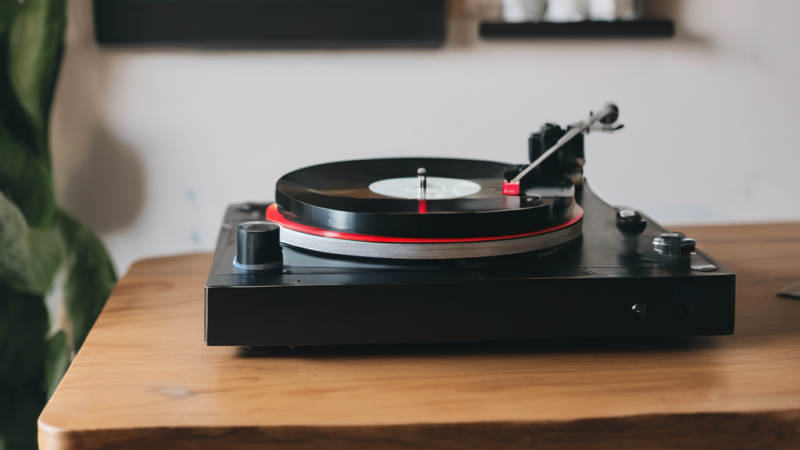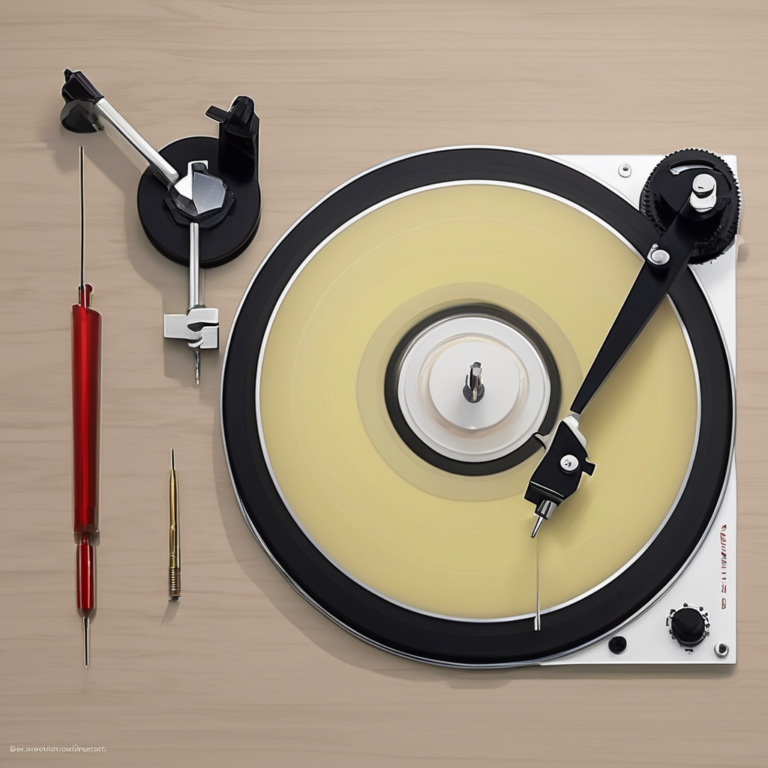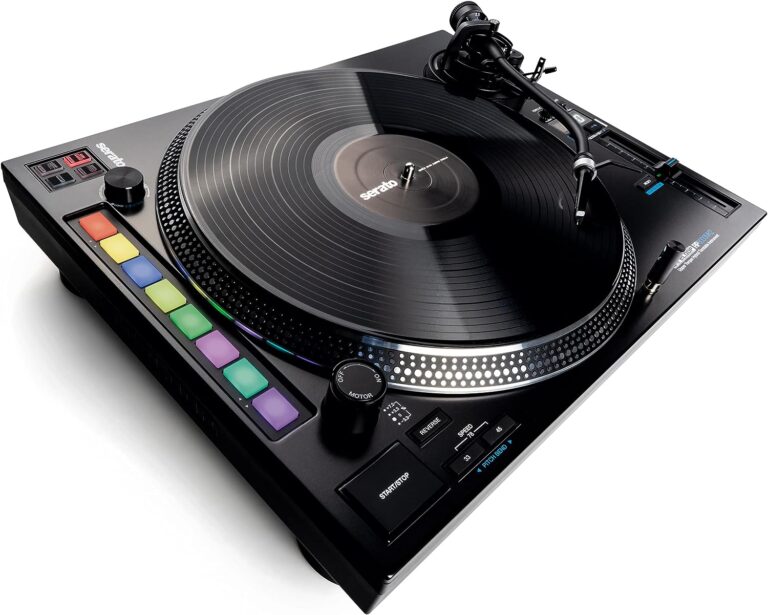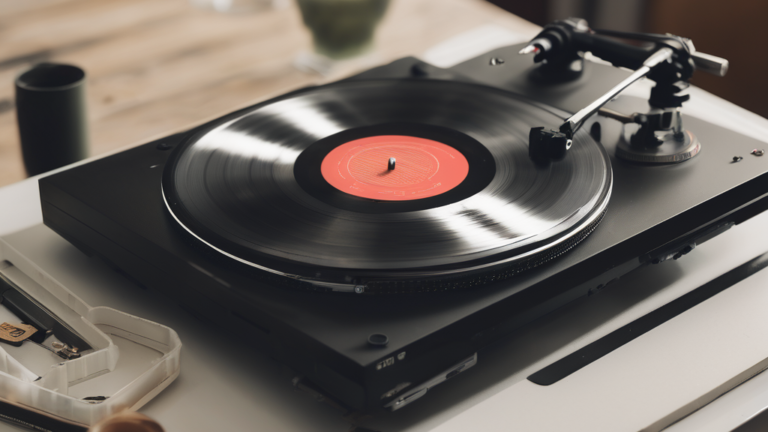What is a Turntable Preamp?
A turntable preamp is an essential component in any vinyl setup. It provides the necessary gain for the signal coming from the turntable to reach your amplifier or powered speakers. Without it, you won’t be able to enjoy the full experience of listening to your favorite vinyl records.
Turntable Preamps come in many different shapes and sizes, and each one has its own unique features and benefits. In this article, we’ll take a look at what a turntable preamp is and how it works, so you can find the right one for your setup.

Understanding the Role of a Phono Preamp
Understanding the role of a phono preamp is important to ensure proper audio fidelity and sound clarity from your turntable. It is designed to boost the signal from the cartridge to a level suitable for other components.
The RIAA curve, a standard for vinyl equalization, is used to shape the sound and provide the correct playback response. Without a phono preamp, the signal would be too low, resulting in poor sound quality. To ensure optimal performance, make sure to get a preamp designed to work with your turntable.
Signal Amplification Explained
The technical aspects of a preamp’s function all revolve around one thing: signal amplification. It is the process of taking a low-level signal, like the output from a turntable, and boosting it to line level, which is the signal strength required for it to be processed through the rest of the audio system.
This signal boost allows the audio to be heard more clearly and with greater fidelity. To achieve this, preamps use a series of amplifiers that adjust the signal. This is done to reduce distortion and noise, while also ensuring that the audio output is at the correct level.
RIAA Equalization Curve
Moving on from the technical aspects of signal amplification, let’s dive deeper into the RIAA Equalization Curve. This curve is used to boost the lower frequencies of a vinyl record, which when played back, helps restore the music’s original sound. The RIAA curve compensates for the low-end frequencies that are lost during the cutting of the vinyl record.
This is done by increasing the gain of those lower frequencies while reducing the gain of the higher frequencies. This helps bring out the subtle nuances of the music which would otherwise be lost. The process of RIAA equalization helps ensure that the audio fidelity and sound clarity of the music are preserved.
Do You Need a Separate Preamp?
When it comes to audio setup, identifying built-in preamps in turntables is key to understanding whether or not you need an external preamp. Depending on your turntable’s features, you may be able to get the sound quality you want without the need for a separate preamp.
However, if you’re looking to achieve a higher level of sound quality, then an external preamp can be a great addition to your audio setup. Consider carefully the features of your turntable and do your research before investing in an external preamp.
When to Consider an External Preamp
Although most modern turntables come with a built-in preamp, it is important to check your turntable features to ensure you have one. Knowing whether or not your turntable has a built-in preamp will help you decide if you need an external preamp.
To find out if your turntable has a built-in preamp, you should first check the user manual for the manufacturer’s instructions. If that is not available, you can look for a switch or button on the body of the turntable itself.
Choosing the Right Preamp for Your Turntable
Choosing the right preamp for your turntable can be a challenging task. We’ll explore the differences between moving coil and moving magnet preamps.
Moving Coil vs. Moving Magnet Preamps
Moving Coil (MC) and Moving Magnet (MM) preamps are the two main categories to consider when selecting the right preamp for your turntable.
The most significant difference between these two preamp types lies in the level of amplification they provide. MC preamps are generally considered to provide a greater signal boost than MM preamps, making them the perfect choice for those who prefer a more prominent sound.
However, MC preamps tend to be more expensive than MM preamps, so budget is an important factor to consider.
Installation and Setup Tips
Installing a preamp is an important part of setting up a turntable so you can enjoy the best audio fidelity and sound clarity. This step-by-step guide to installing a preamp, and troubleshooting common issues will help you get the most out of your audio setup.
Step-by-Step Guide to Installing a Preamp
Now that you have chosen the right preamp for your turntable, it’s time to get it set up. This step-by-step preamp installation guide will help you easily install your preamp and ensure it functions properly.
Step-by-Step Guide to Installing a Preamp
- Gather the necessary materials. This includes the preamp, an installation kit, and a Phillips head screwdriver.
- Read the preamp manual thoroughly. It is important to be familiar with the product before beginning the installation process.
- Turn off the power to the audio system. Before you begin working, make sure to turn off the power to the entire system.
- Connect the two RCA cables from the preamp to the audio system’s receiver.
- Connect the power cable from the preamp to the power source.
- Attach the ground cable from the preamp to the audio system’s receiver.
- Make the necessary connections for the input and output cables.
- Turn on the power to the audio system.
- Test the preamp and ensure that it is properly connected.
By following these steps, you can successfully install a preamp in your audio system. With the preamp in place, you will have complete control over the volume levels and other features of your audio system.
FAQs
What is a turntable preamp and why do I need one?
A preamp, also known as a phono stage, is an audio device used to boost the signal coming from the turntable. It allows for amplification of the signal to match the RIAA curve — the standard audio curve used to play vinyl records — and to increase sound fidelity and clarity. Many turntables have a built-in preamp, but if yours doesn’t, you’ll need an external preamp to maximize the performance of your turntable.
Can a preamp improve my turntable’s sound quality?
The simple answer is yes! A preamp can increase the clarity and fidelity of your audio setup. By boosting the signal of your turntable and equalizing it to the RIAA curve, you can enjoy a richer, fuller sound. Plus, by investing in a preamp, you can maximize the range of your turntable’s features.
How do I know if my turntable has a built-in preamp?
Fortunately, it’s easy to determine whether your turntable is equipped with a built-in preamp. Many turntables have a switch or button that indicates the presence of a preamp. The switch will usually be labeled “phono/line” or “preamp”. If you don’t find a switch on your turntable, you can check the user manual or consult the manufacturer for more information.
Conclusion
A phono preamp is an essential component of any turntable setup. It amplifies the signal from your turntable and equalizes it according to the RIAA curve, allowing you to enjoy the best sound quality from your vinyl collection. Depending on your turntable, you may need an external preamp, while some turntables have built-in preamps.
With the right preamp selection and installation, you can maximize your vinyl listening experience and enhance the performance of your audio system. If you have questions about the process, it is best to consult a professional audio technician for troubleshooting and setup guidance.
Our Mission: At AudioInspects, we are dedicated to providing the most comprehensive and authentic reviews of audio equipment on the market. We conduct independent testing and research of products, so you can make an informed decision before making a purchase. Our mission is to help you find the best audio equipment to improve your listening experience. So trust us to deliver the most reliable recommendations and advice.
Disclosure: When you do decide to make a purchase through our links, please note that we may earn a commission, but this does not affect the honesty of our reviews. You can read our affiliate disclosure in our Disclosure.






